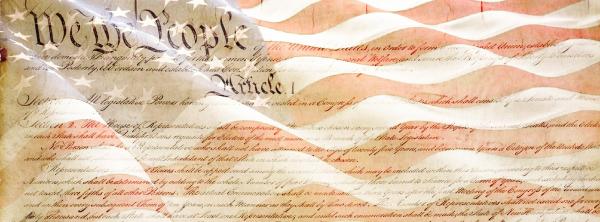“As a public health measure, Biden's orders may be salutary. But they stand on shaky legal ground.”
“[t]here are several Republican politicians who've said that vaccine mandates are un-American. But they're not un-American at all. In fact, they're very much part of the tradition, culture and values of America.
The question is whether the court would uphold the Biden mandate under the Occupational Safety and Health Act. I think there's strong grounds that they will, because he's acting with very clear and explicit congressional authority.”
You might never guess that these two law professors are discussing the same issue: the Biden vaccine mandate for workplaces with 100 workers or more. Neither makes transparent the underpinnings (factual or legal) for their conclusions.
So, here I will explain the law so ensuing comments can be based on factual evidence and legal standards, not feelings or fiat.
The Constitutionality of the Enabling Legislation
Constitutional objections to the mandate can be quickly dismissed. Congress has, for the last 51 years, empowered OSHA with authority to issue Emergency Rules. The constitutionality of the enabling legislation hasn’t been challenged – until, suddenly, now.
“Congress passed the Occupational Safety and Health Act (the [OSHA] Act) in 1970,.. to assure safe and healthful working conditions for the nation's workforce and to preserve the nation's human resources.”
Whether the proposed Emergency Rule regarding a vaccine mandate comports with the strict standards required by the statute is another matter and that is subject to discussion and disagreement.
The OSHA Act of 1970 included a provision for providing temporary emergency standards [1] under certain conditions – if, and only if, the Secretary of Labor “finds substantial evidence indicating both that a "grave danger" exists and that an emergency standard is "necessary" to protect workers from such danger.”
The emergency standards are not as far-reaching or draconian as its opponents would have us believe, rendering it wholly inappropriate to attack constitutionally. Nor does the Act form the basis for some dictatorial power grab. Instead, it is to be “treated as an extraordinary power to be used only in "limited situations" in which a grave danger exists, and then, to be "delicately exercised.” Additionally, the emergency rules are limited to six months.
The Secretary of Labor must establish (to the reviewing court’s satisfaction) that
- employees are exposed to grave danger,
- the emergency standard is necessary to protect employees from such danger, and
- the proof of grave danger and necessity is made by substantial evidence,
I’ll talk about the grave danger requirement now and address the necessity part in another article.
In Asbestos Information Association v. OSHA (1984), the reviewing court rejected the Emergency Standard submitted by OSHA. However, the court validated the power of OSHA to make such emergency rules – if a substantial quantum of evidence establishes grave danger and necessity, such that “a reasonable mind might accept as adequate to support a conclusion."
That standard isn’t that high, but is higher than that required to support a standard rule.:
“In making this inquiry, we must, of course, defer to OSHA's fact-finding expertise.”
OSHA’s determination as to the gravity of danger is considered a policy decision to be given great deference by the court - meaning courts should not second-guess the agency’s determination that a particular health hazard presents a “grave danger.” Citing Supreme Court precedent, the opinion noted that “The Agency need not support its conclusion "with anything approaching scientific certainty," so long as the Agency supports its conclusion with "a body of reputable scientific thought.”
What Constitutes a Grave Danger?
To support the grave danger requirement, we can expect OSHA to put forth evidence establishing that:
- As of September 2021, adjusting for population, the American COVID death rate is about eight times higher than other high-income countries.
- As of Sept 21, 2021, COVID deaths in American surpassed the number of American deaths from Spanish flu.
- That the vaccine has proven effective in preventing symptoms is well accepted by the mainstream scientific community and been published in peer-reviewed literature.
- With 700,000 deaths and still rising, public health experts remain concerned that we have not overtaken the Delta variant
- Nearly all new COVID-related deaths are in the unvaccinated. (Only 0.8% of deaths in May were among fully vaccinated individuals.)
- 2020’s deaths increased by almost 18% compared to 2019 – the third leading cause-of-death being COVID, replacing and surpassing stroke and unintentional injuries.
- In 2020, US life expectancy fell by more than a full year -- from 78.7 years to 77.4 years – falling even more for Latino and Black populations.
- Pediatric COVID-19 hospitalizations have risen by 84%, and mechanical ventilation more than quadrupled.
- More than one-third of patients who survive may succumb to long-term COVID, including persisting fatigue and brain fog.
- Hospital resources are being stretched to their limit. In August, 90% of Florida’s ICU beds were full. In September, there were only 319 adult and 104 pediatric staffed ICU beds available in Texas, a state with 29 million people.
As compelling as this evidence is, it will not establish the grave danger requirement unless these facts can be translated to effects in the workplace. Additionally, it will fall to OSHA to establish the number of deaths and illnesses prevented by vaccination during the duration of the six-month Emergency Rule. That number needn’t be high.
“The Secretary determined that eighty lives at risk is a grave danger. We are not prepared to say it is not.” Asbestos Information Association v. OSHA
It’s difficult to find the number of workplace-related COVID infections and deaths in the US. In the UK, 3,872 Covid workplace outbreaks were reported between April 2020 and May 2021. In Ontario, as of December 2020, 11,980 COVID-19 cases were reported in healthcare workers. Since June 2020, 22 percent of cases in the working-age population have been attributed to workplace outbreaks.
OSHA might establish meeting this threshold by presenting the number of Worker’s Comp claims paid in the last six months. That number likely underestimates the number of workplace diseases and deaths since thousands of cases are still pending. The opponents of the mandate could claim that the extent of vaccination has increased, and past numbers are not determinative of future risks, or that the burden of disease and death varies by state, and a national average shouldn’t be determinative of future rules that impact states differently.
The actual determination likely will turn on a battle of number-crunching “experts” and modeling of future disease– which isn’t hard to attack. But, “we do not have a situation in which the symptoms of exposure are "easily curable and fleeting... Nor do we have a situation in which the danger of developing a serious disease is speculative,” giving OSHA a more solid basis to proceed.
“[As] the Supreme Court has noted, the determination of what constitutes a risk worthy of Agency action is a policy consideration that belongs, in the first instance to the Agency. Some risks are plainly acceptable and others are plainly unacceptable."
What if the answer isn’t so plain? How will the Supreme Court rule?
A favored decision-making technique of judges and juries alike is called, in the legal trade, “outcome-determinativeness.” In one version of this approach, the decision-makers first decide what they want to do, and then they look for evidence to back that position. This doesn’t mean that they will ultimately decide based on what they want to do – alone; just that if there is sufficient credible evidence to support their desired preference (even if there might be superior evidence on the other side), that’s the way they will go.
In this heavily conservative court, we can expect this method to drive the decision.
However, I don’t think even this Supreme Court bench will find enough evidence to substantially denigrate OSHA’s determination of grave danger in the workplace – especially if the proponents can establish significant danger even in states boasting high vaccination rates.
The real question, I think, will turn on the necessity of vaccination – which I will turn to next….
[1] 489 F.2d. at 127 (5th Cir. 1974).




